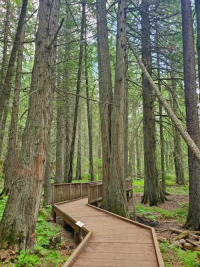Sifu
SAWHORSE
- Joined
- Sep 3, 2011
- Messages
- 3,384
Proposal to construct an elevated walkway through a public park. At no point does the height of the walkway exceed 30". It does not connect any buildings, simply a walkway between two points in the park, about 800' long. By IBC definition, it is a structure, but so is a sidewalk, which has no IBC definition. Sidewalks are exempt from a permit per 105.2. Is this? If not, which sections apply? By ch. 10, IBC 1001.1 first scopes MOE from buildings or portions thereof. It then includes structures. The definition of building is "supporting" human occupancy. This does not meet the definition for occupiable space. If this is not an occupiable space, is it "supporting" human occupancy ("supporting" can be defined in different ways depending on the context)? Ch. 16 scopes "structures" regulated by the IBC. I can't find a clear path to say this is regulated by the IBC (I don't really want to find one either).

